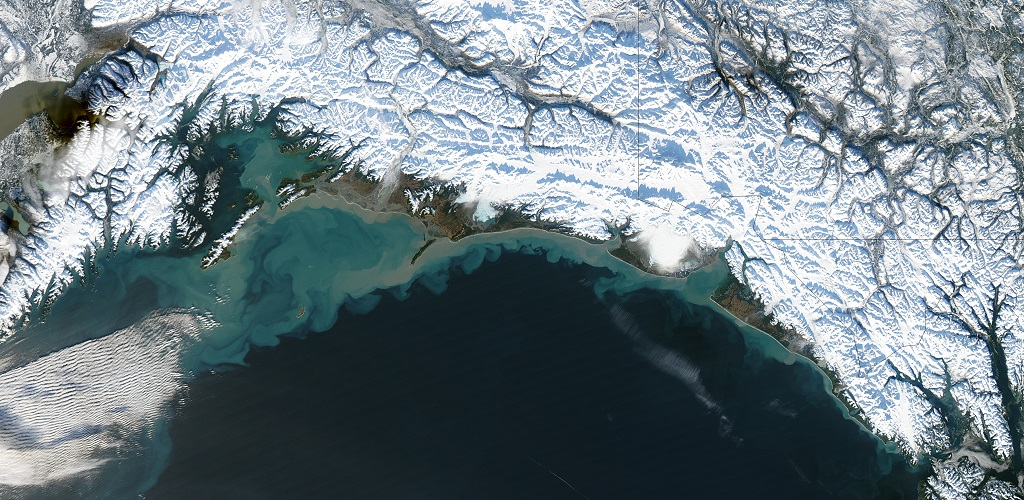In coastal glacial watersheds, changes in hydrology and climate drive shifts in nutrient transport

In the Gulf of Alaska, glacierized watersheds flowing into nearshore ecosystems are thought to be a significant source of nutrients for primary production. Warming global temperatures are driving changes in glacial cover, precipitation patterns, and freshwater runoff, with complex implications for coastal environments.
Alaska EPSCoR researchers, including ACRC scientists Jason Fellman and Eran Hood, publishednew research on a three-year study investigating sediment and nutrient transport across heavily glacierized and non-glacierized watersheds in southcentral and southeast Alaska.
The team sought to understand the influences of both glacial input and regional climate variables on the magnitude, type, and timing of materials export from ten streams across Kachemak Bay in southcentral Alaska, and Lynn Canal in southeast Alaska. At 158 cm per year, Lynn Canal receives over double the annual precipitation of Kachemak Bay. Researchers found that while the presence of glaciers largely drives the amount of nutrients and sediments coming out of watersheds, the regional climate and precipitation regime dictates much of the seasonal timing of that transport out to coastal ecosystems.
Regional landscape differences impact the types and quantity of dissolved and particulate matter coming out of streams. In Kachemak Bay, sedimentary rock is more prevalent and led to higher concentrations of dissolved solids in streams, whereas in Lynn Canal, wetland environments led to higher organic carbon export.
By selecting study sites with two distinct hydrologic and climatic regimes, the researchers gained insight into what changes may be in store for coastal watersheds that drain into the northern Gulf of Alaska. Kachemak Bay’s streamflow pattern may one day resemble the current flow pattern in Lynn Canal as snowpack decreases and fall precipitation increases.
While heavily and moderately glacierized watersheds will likely see extended seasons of export of inorganic and organic matter from the summer glacial runoff peak into the fall in the future, non-glacierized watersheds may start to see two peaks in nutrient runoff: one from snowmelt in the spring and one from increased rain in the fall. Eventually, as snowmelt decreases, there will be less nutrient transport to the ocean in the spring and more in the fall.
What does this mean for coastal ecosystems in the Gulf of Alaska? Changes in the timing of nutrients and sediment entering coastal waters could have cascading effects throughout the marine food web. Changes in watershed type and hydrology will be a necessary consideration for future research on coastal river ecosystems.